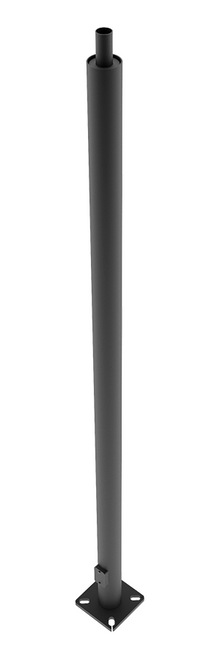-

RAB Lighting
Pole 4 Square 11 Gauge 10Ft Drilled 2 Side @ 180Deg+ Plugs, PS4-11-10D2 | RAB
Add to Cart$460.00 -

RAB Lighting
Pole 4 Round 11 Gauge 25 Foot Welded Tenon Square Base, PR4-11-25WT | RAB
Add to Cart$1,010.00 -

-

-

-

-

ATG LED Lighting
ATG LED Lighting ABK-R4 ABKIT 4RP STL GAL 3/4X30 11BC Round Steel Light Poles
Add to Cart$94.61 -

ATG LED Lighting
ATG LED Lighting ABK-S4 ABKIT 4SQ STL GAL 3/4X30 8-11BC 4" Straight Square Steel Poles
Add to Cart$94.61 -

ATG LED Lighting
ATG LED Lighting ABK-S5 ABKIT 5SQ STL S11H S07G 1X36 11BC 5" Straight Square Steel Poles
Add to Cart$117.19 -

ATG LED Lighting
ATG LED Lighting ABK-SU4 ABKIT 4SQU 4" Straight Square Steel Poles
Add to Cart$94.61 -

ATG LED Lighting
ATG LED Lighting ABK-SU5 ABKIT 5SQU 5" Straight Square Steel Poles
Add to Cart$117.19 -

ATG LED Lighting
ATG LED Lighting BCVR-R4 KIT BCVR 4SRBC BRZ Round Steel Light Poles
Add to Cart$47.74

Light Poles
In the tapestry of urban development and infrastructure, light poles emerge as silent sentinels of illumination, safety, and aesthetics. These pivotal components of outdoor lighting infrastructure are not just functional elements that light up streets, parks, and public spaces but also play a significant role in the overall design and safety of urban and suburban environments. From the sleek and modern to the robust and traditional, the types of light poles, including steel, aluminum, or wood, cater to a wide range of applications and industries including the federal government, local municipalities, and commercial and industrial markets. This article delves into the world of light poles, exploring their types, locations, and the diverse industries that utilize them, emphasizing key terms such as lamp post, lamp pole, outdoor post lights, light post, exterior post light, and exterior lamp post.
Types of Light Poles
The choice of material for light poles plays a crucial role in their functionality, durability, and aesthetic appeal. The primary materials used include steel, aluminum, and wood, each offering unique advantages.
Steel Light Poles
Known for their strength and durability, steel light poles are a common choice for areas requiring robust support against harsh weather conditions and heavy usage. They are often galvanized or coated to resist corrosion and extend their lifespan.
Aluminum Light Poles
Aluminum poles are lightweight, corrosion-resistant, and require minimal maintenance, making them ideal for coastal areas and environments susceptible to harsh weather. Their aesthetic flexibility allows for various designs, from traditional lamp posts to modern outdoor post lights.
Wood Light Poles
Offering a natural and traditional aesthetic, wood poles are favored in parks, residential areas, and historic districts. They blend seamlessly with natural surroundings but require more maintenance and have a shorter lifespan compared to their metal counterparts.
Locations of Light Poles
Light poles are ubiquitous in urban and suburban landscapes, serving both functional and aesthetic purposes in various locations.
Streets and Highways
Ensuring the safety of pedestrians and vehicles, light poles along streets and highways provide necessary illumination, reducing accidents and enhancing visibility.
Public Parks and Recreational Areas
Outdoor post lights in parks and recreational areas create inviting and safe environments for community activities after dusk.
Parking Lots and Commercial Premises
Commercial and industrial markets rely on exterior post lights to secure and illuminate parking lots and building perimeters, deterring crime and ensuring the safety of employees and customers.
Industries That Use Light Poles
The application of light poles spans across multiple sectors, each with specific requirements for safety, security, and aesthetics.
Federal Government
Government buildings, national parks, and public lands utilize lamp poles and light posts for security and to highlight architectural features and landscapes.
Local Municipalities
Cities and towns invest in lamp posts and exterior lamp posts to enhance street lighting, improve public safety, and contribute to the urban aesthetic.
Commercial and Industrial Markets
From retail complexes to industrial facilities, businesses prioritize effective outdoor lighting for visibility, safety, and to create a welcoming atmosphere for customers and employees.
The Evolution of Light Pole Lighting
The evolution of light pole technology has introduced innovative designs and lighting solutions, including LED outdoor post lights and solar-powered lamp poles. These advancements offer increased energy efficiency, longer lifespans, and reduced maintenance costs, meeting the growing demands for sustainable and cost-effective lighting solutions.
The Importance of Light Pole Lights in Urban Design
Light poles play a critical role in urban design and planning. Beyond their primary function of illumination, they contribute to the aesthetic and character of urban spaces. Designers and planners carefully select lamp posts and light pole lights that complement architectural styles and landscapes, enhancing the visual appeal and cohesiveness of public spaces.
Conclusion
Light poles are integral components of our urban infrastructure, serving not only as sources of illumination but also as elements that enhance safety, security, and aesthetics. Whether crafted from steel, aluminum, or wood, located in bustling city streets or serene parks, these structures support the needs of various industries, including the federal government, local municipalities, and commercial sectors. As technology advances, the integration of energy-efficient lighting solutions such as LED and solar-powered lights continues to redefine the possibilities of outdoor lighting. The careful selection and application of lamp posts, exterior lamp posts, and light pole lights play a pivotal role in shaping the nighttime landscapes of our communities, making them safer, more accessible, and aesthetically pleasing for all.
